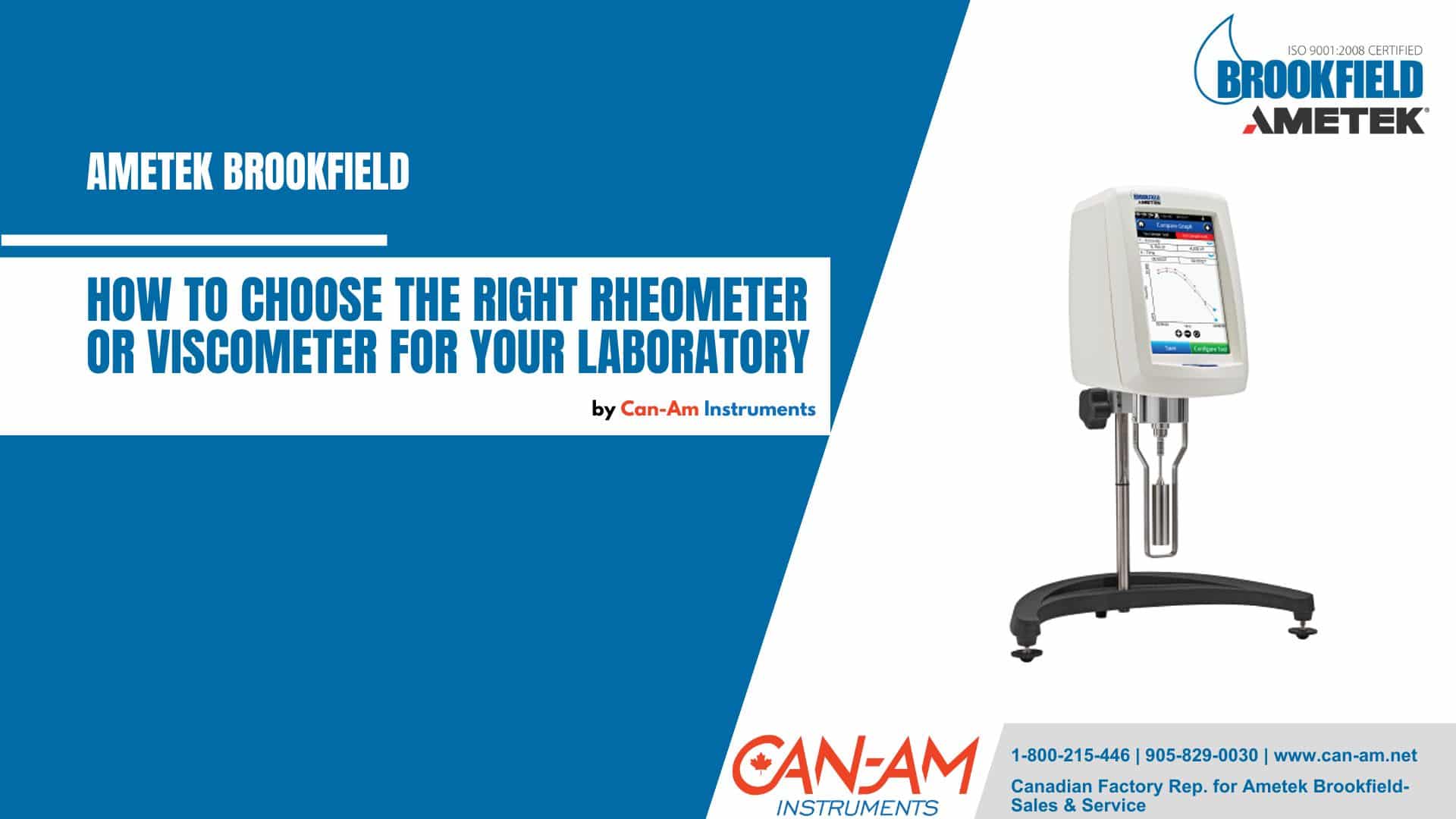When it comes to measuring the physical properties of fluids or semi-solid materials, Brookfield’s rheometers and viscometers are indispensable tools for laboratories. These instruments provide critical information about a material’s viscosity, elasticity, and other rheological properties. Choosing the right rheometer or viscometer for your laboratory can be a daunting task, as there are many factors to consider, such as the type of material, desired measurement range, and budget constraints.
In this comprehensive guide, we will walk you through the process of selecting the perfect Brookfield rheometer or viscometer for your laboratory. We will discuss the different types of instruments, their applications, and the factors you should consider when making your decision. By following our step-by-step guide, you can ensure that your laboratory is equipped with the ideal instrument for your needs, resulting in accurate and reliable measurements.
1. Understanding the Basics: Rheometers and Viscometers
Before diving into the process of choosing the right instrument, it’s crucial to understand the basics of rheometers and viscometers, as well as the differences between them.
1.1. Rheometers
A rheometer is a device used to measure the rheological properties of fluids or semi-solid materials, such as viscosity, elasticity, and shear stress. Rheometers are versatile instruments that can handle a wide range of materials and conditions, making them suitable for various applications in industries such as food, pharmaceuticals, cosmetics, and polymers.
1.2. Viscometers
Viscometers are instruments specifically designed to measure the viscosity of fluids. Viscosity is a measure of a fluid’s resistance to flow, and it is a critical parameter in many processes. Viscometers are commonly used in the quality control of products like paint, oil, and food.
1.3. Differences between Rheometers and Viscometers
The primary difference between rheometers and viscometers is the range of properties they can measure. While viscometers only measure viscosity, rheometers can measure multiple rheological properties, providing a more comprehensive analysis of the material being tested. Consequently, rheometers are typically more complex and expensive than viscometers.
2. Types of Rheometers and Viscometers
There are various types of rheometers and viscometers, each designed for specific applications and measurement techniques. Understanding the different types of instruments and their respective strengths and limitations will help you make an informed decision.
2.1. Rotational Viscometers
Rotational viscometers are the most common type of viscometer, featuring a spindle that rotates within the fluid being tested. The resistance to rotation is used to calculate the fluid’s viscosity. Rotational viscometers are ideal for measuring the apparent viscosity of Newtonian fluids or non-Newtonian fluids, such as oils, paints, resins, and various food products to name a few.
2.2. Capillary Viscometers
Capillary viscometers consist of a narrow tube through which the fluid flows under the influence of gravity or pressure. The time taken for the fluid to flow through the tube is used to determine its viscosity. Capillary viscometers are ideal for Newtonian, clear low-viscosity fluids and are commonly used in the automotive and petrochemical industries.
2.3. Falling Ball Viscometers
Falling ball viscometers measure the time it takes for a ball or sphere to fall through a fluid-filled tube. The falling speed of the ball is correlated to the fluid’s viscosity. Falling ball viscometers are suitable for measuring mostly Newtonian low-viscosity fluids and are commonly used in the pharmaceutical industry.
2.4. Cone-and-Plate Rheometers
Cone-and-plate rheometers are a type of rotational rheometer where a fluid sample is placed between a stationary flat plate and a rotating cone. The shear stress and shear rate are determined from the torque and rotation speed, respectively. Cone-and-plate rheometers are ideal for measuring the rheological properties of low- to medium-viscosity fluids and are often used in the pharmaceutical, cosmetics and paint industries.
2.5. Parallel Plate Rheometers
Parallel plate rheometers, another type of rotational rheometer, consist of two flat plates with the fluid sample sandwiched between them. One plate rotates while the other remains stationary, allowing the measurement of shear stress and shear rate. Parallel plate rheometers are suitable for a wide range of fluid viscosities and are commonly used in the food and polymer industries.
2.6. Extensional Rheometers
Extensional rheometers measure the extensional or elongational properties of fluids and semi-solid materials. These rheometers work by stretching the sample material between two plates, enabling the measurement of stress and strain under extension. Extensional rheometers are particularly useful in the study of polymer melts, fiber spinning, and food processing.
3. Factors to Consider When Choosing a Rheometer or Viscometer
Now that you have an understanding of the different types of rheometers and viscometers, it’s time to consider the factors that will influence your choice of instrument.
3.1. Material Type and Properties
The type of material you will be testing is the primary factor to consider. Some instruments are better suited for specific materials, so it’s crucial to match the instrument to the material’s properties.
3.2. Measurement Range and Accuracy
The desired measurement range and accuracy are also essential factors. Rheometers and viscometers come with varying levels of sensitivity, and you should choose an instrument that can accurately measure the viscosity or rheological properties within the range you require.
3.3. Temperature Control
Many rheological properties are temperature-dependent, so it’s vital to consider whether your instrument requires temperature control capabilities. Some rheometers and viscometers come with built-in temperature control systems such as the Peltier Plate system, while others may require external temperature control units like a circulating water bath or thermosel.
3.4. Budget Constraints
As with any laboratory equipment, budget constraints play a role in selecting the right rheometer or viscometer. Viscometers are generally more affordable than rheometers, but they also have limited capabilities. If you only require viscosity measurements, a viscometer may suffice. However, if you need a more comprehensive analysis of the material’s rheological properties, investing in a rheometer may be necessary.
3.5. Ease of Use and Maintenance
Another important factor is the instrument’s ease of use and maintenance. Some rheometers and viscometers are more user-friendly than others, and it’s essential to choose an instrument that your lab personnel can operate efficiently. Additionally, consider the maintenance requirements, as some instruments may need more frequent calibration or servicing. Selecting an instrument that is locally supported is important to prevent downtimes.
Conclusion
Choosing the right rheometer or viscometer for your laboratory is a crucial decision that requires a thorough understanding of the different types of instruments and their applications. By considering the material type, desired measurement range, temperature control requirements, budget constraints, and ease of use, you can confidently select the perfect instrument for your lab.
With the right rheometer or viscometer in place, your laboratory will be well-equipped to provide accurate and reliable measurements, ensuring that your research or quality control processes are as efficient and effective as possible


